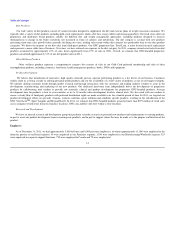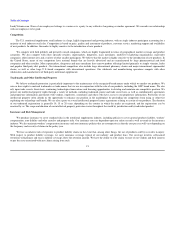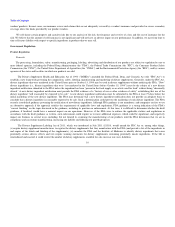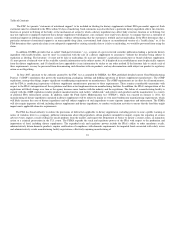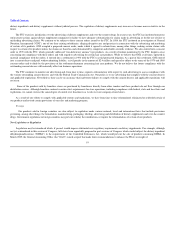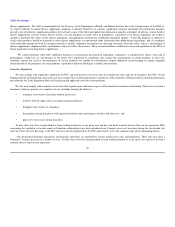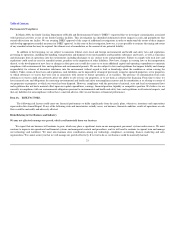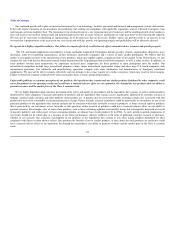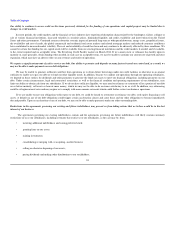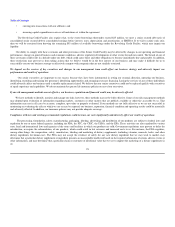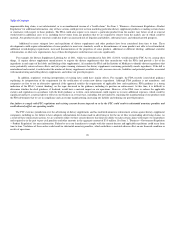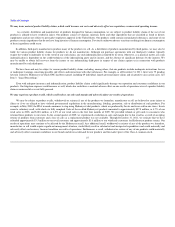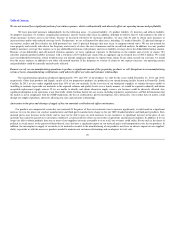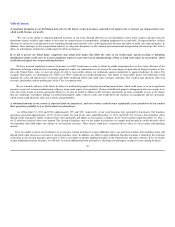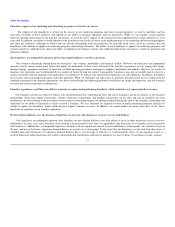GNC 2012 Annual Report Download - page 25
Download and view the complete annual report
Please find page 25 of the 2012 GNC annual report below. You can navigate through the pages in the report by either clicking on the pages listed below, or by using the keyword search tool below to find specific information within the annual report.
Table of Contents
Our failure to appropriately respond to changing consumer preferences and demand for new products could significantly harm our customer
relationships and product sales.
Our business is particularly subject to changing consumer trends and preferences. Our continued success depends in part on our ability to anticipate and
respond to these changes, and we may not be able to respond in a timely or commercially appropriate manner to these changes. If we are unable to do so, our
customer relationships and product sales could be harmed significantly.
Furthermore, the nutritional supplements industry is characterized by rapid and frequent changes in demand for products and new product introductions.
Our failure to accurately predict these trends could negatively impact consumer opinion of our stores as a source for the latest products. This could harm our
customer relationships and cause losses to our market share. The success of our new product offerings depends upon a number of factors, including our ability
to: accurately anticipate customer needs; innovate and develop new products; successfully commercialize new products in a timely manner; price our products
competitively; manufacture and deliver our products in sufficient volumes and in a timely manner; and differentiate our product offerings from those of our
competitors.
If we do not introduce new products or make enhancements to meet the changing needs of our customers in a timely manner, some of our products could
become obsolete, which could have a material adverse effect on our revenues and operating results.
Our substantial debt could adversely affect our results of operations and financial condition and otherwise adversely impact our operating income and
growth prospects.
As of December 31, 2011, our total consolidated long-term debt (including current portion) was approximately $901.5 million, and we had an additional
$72.0 million available under the Revolving Credit Facility after giving effect to $8.0 million utilized to secure letters of credit.
All of the debt under the Senior Credit Facility bears interest at variable rates. Our unhedged debt is subject to additional interest expense if these rates
increase significantly, which could also reduce our ability to borrow additional funds.
Our substantial debt could have material consequences on our financial condition. For example, it could:
increase our vulnerability to general adverse economic and industry conditions;
require us to use all or a large portion of our cash flow from operations to pay principal and interest on our debt, thereby reducing the availability
of our cash flow to fund working capital, capital expenditures and other business activities;
limit our flexibility in planning for, or reacting to, changes in our business and the industry in which we operate;
restrict us from making strategic acquisitions or exploiting business opportunities;
place us at a competitive disadvantage compared to our competitors that have less debt; and
limit our ability to borrow additional funds or pay cash dividends.
For additional information regarding the interest rates and maturity dates of our existing debt, see Item 7, "Management's Discussion and Analysis of
Financial Condition and Results of Operations—Liquidity and Capital Resources."
We may be able to incur additional debt in the future, including collateralized debt. Although the Senior Credit Facility contains restrictions on the
incurrence of additional debt, these restrictions are subject to a number of qualifications and exceptions. If additional debt is added to our current level of debt,
the risks described above would increase.
23
•
•
•
•
•
•



